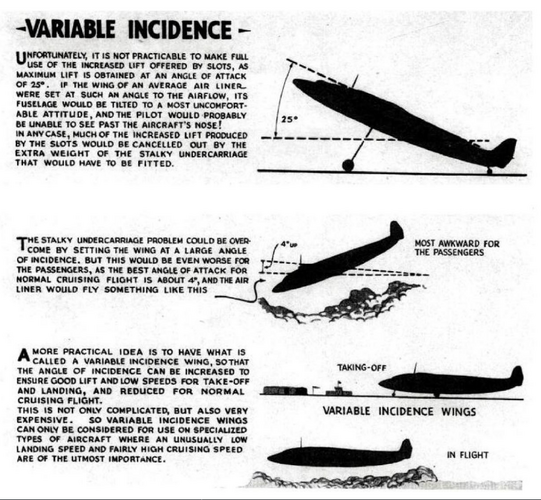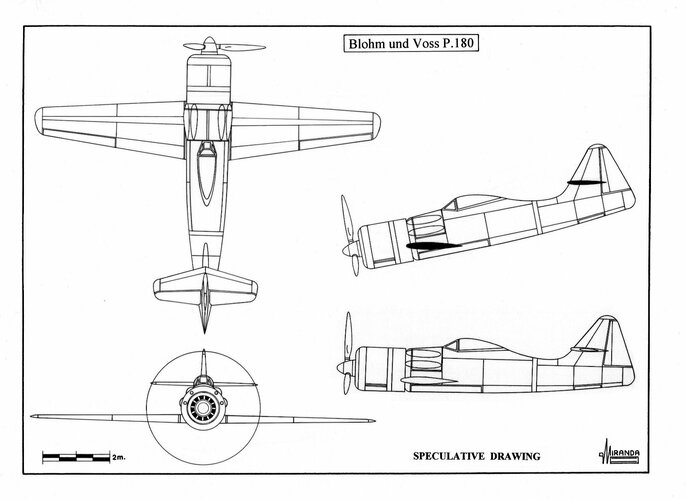You are using an out of date browser. It may not display this or other websites correctly.
You should upgrade or use an alternative browser.
You should upgrade or use an alternative browser.
Strange Old Idea
- Thread starter hesham
- Start date
Dilandu
I'm dissatisfied, which means, I exist.
Well, the concept of variable incidence wing for passenger planes - so the cabin always stayed horizontal during all stages of flight.
- Blohm und Voss P. 180
In mid-1942 the RLM ordered the Focke-Wulf Company to manufacture a ground attack version of the Fw 190 fighter, to replace the Junkers Ju 87 on the Eastern Front.
Kurt Tank experimented with various modifications to carry bombs made on the Fw 190 A-2, A-3 and A-5 models.
Towards the end of spring 1943 plans were under way to produce 569 units of the Fw 190 A-6 that was conceived as a ground attack aircraft from the start, because of the inadequate performance of the BMW 801 D-2 engine in altitude.
To compete with the Fw 190 A-6, Dr. Vogt proposed a specialized strafing airplane based on a very unusual configuration.
The P.180 was fitted with a variable incidence wing and tailplane that could rotate eleven degrees to stay in a horizontal position while the rest of the plane leaned toward the ground for a long-duration strafing without the need to raise the nose every few seconds to avoid impact on the ground.
This configuration precluded the installation of the landing gear or weapons on the wings, a problem that forced the designers to install the weapons between the engine and cockpit (probably four synchronized MG 151/20 cannons) and the landing gear on the belly fuselage.
The BMW 801 engine was too compact to allow the cannons to fire between the cylinders and possibly the solution adopted by Dr. Vogt was like that used in 1941 by the Finns and Soviets in their VL Myrsky I and Yatsenko I-28 fighters.
Also, in 1941 the Swedes solved the landing gear problem by designing for their FFVS J-22 fighter a Messerschmitt Bf 109 style undercarriage whose legs retracted backwards and the wheels rotated ninety degrees to accommodate the belly fuselage.
As usual, this revolutionary idea did not please the Technisches Amt and the project was rejected in favor of Focke-Wulf.
Blohm und Voss P. 180 speculative technical data
Wingspan: 10.37 m, length: 8.9 m, power plant: one BMW 801 D-2 air cooled radial engine rated at 1,700 hp, armament: four fuselage mounted MG 151/20 rapid-fire cannons.
Attachments
Similar threads
-
-
Old Idea,to Transfer Giant Flying Boat Into Amphibian
- Started by hesham
- Replies: 3
-
Centralized Power for Aircraft,1939
- Started by hesham
- Replies: 4
-
-
Strange Idea for Glider Aircraft,1940s
- Started by hesham
- Replies: 2


